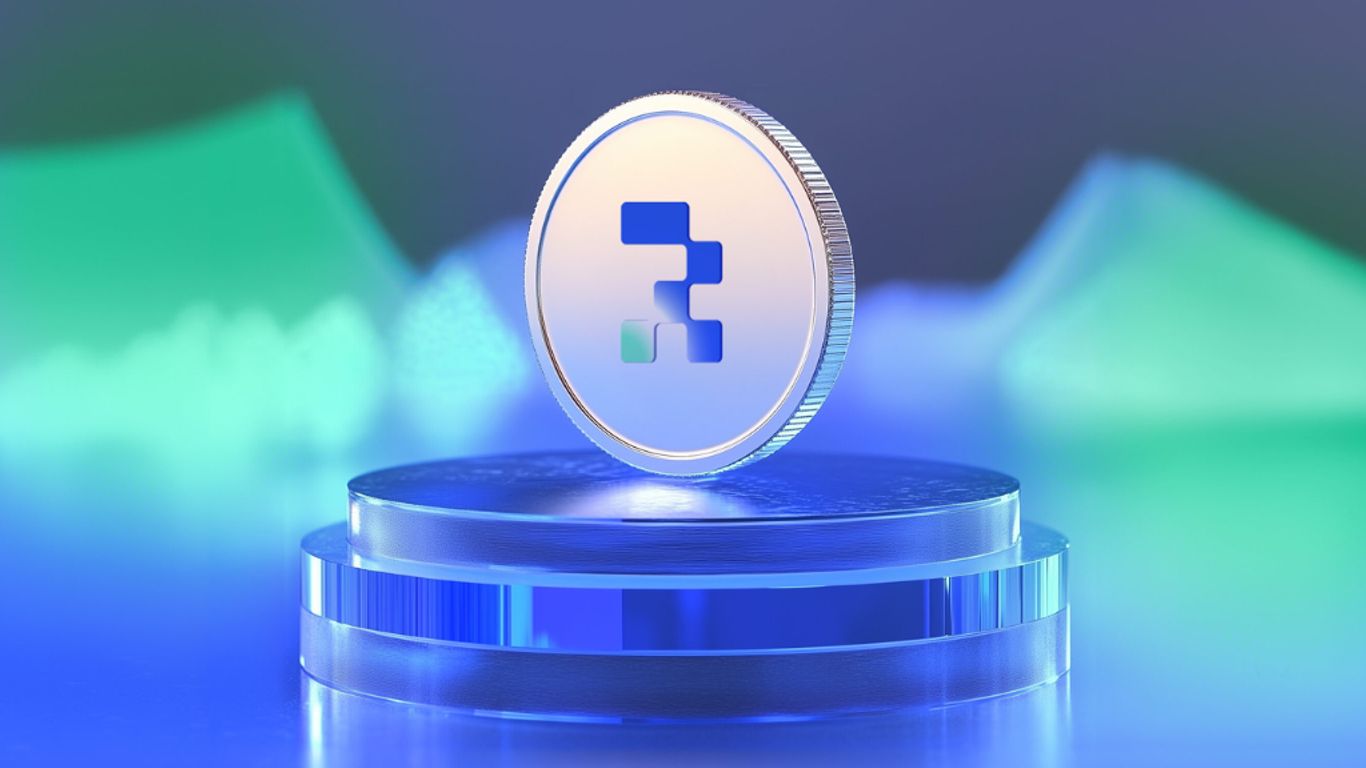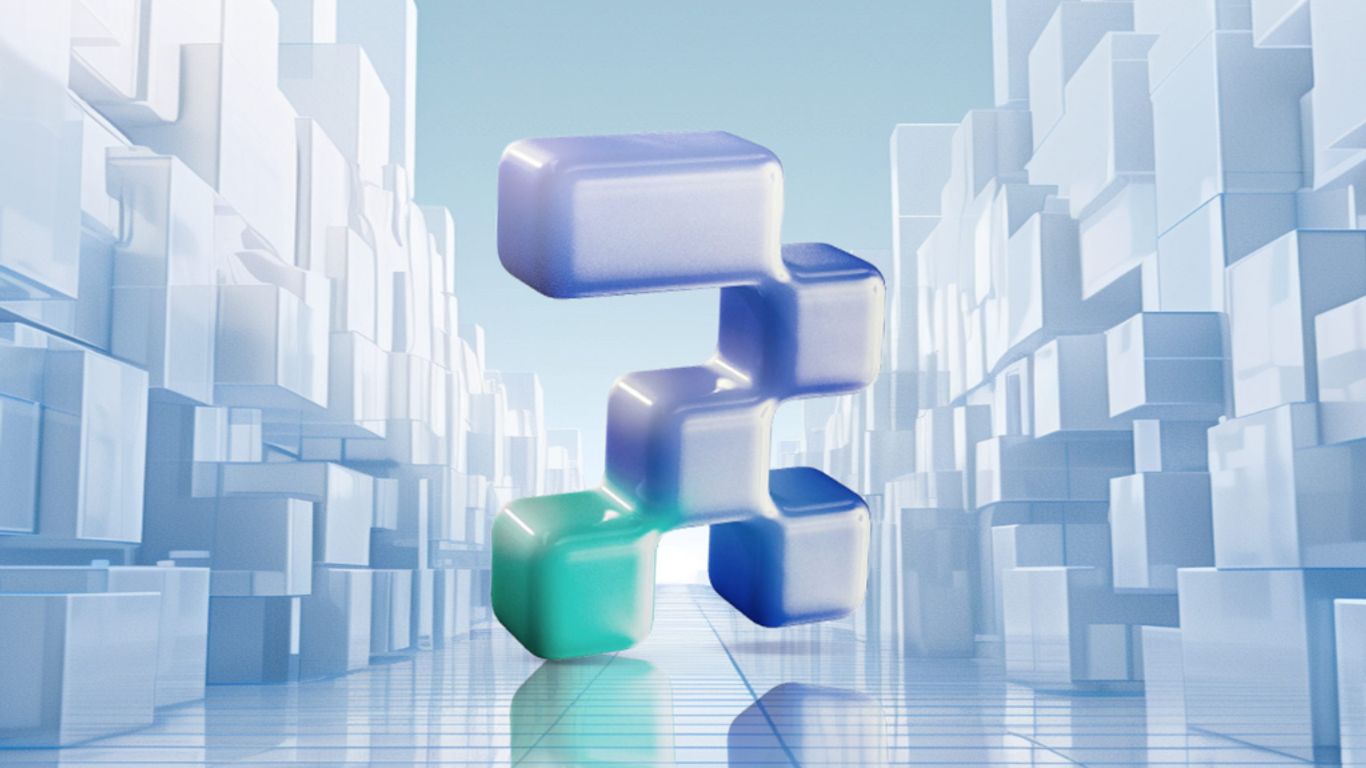Tokenized treasuries have recently hit a big milestone, crossing the $2 billion mark in market capitalization. This rapid growth reflects increasing interest from both individual and institutional investors. These digital versions of U.S. government bonds offer new opportunities for trading and investment.
Key Takeaways
- Tokenized treasuries are digital versions of U.S. government bonds that can be traded on blockchain platforms.
- The market for tokenized treasuries has grown rapidly, reaching $2 billion in just five months.
- Major players like BlackRock, Franklin Templeton, and Ondo Finance are leading the market.
- Enhanced liquidity, 24/7 trading, and global accessibility are key benefits of tokenized treasuries.
- Despite the growth, challenges like regulatory hurdles and market volatility still exist.
The Rise of Tokenized Treasuries

Tokenized Treasuries are booming! In less than five months, they have doubled in size, crossing the $2 billion level. Let's dive into what they are, how they work, and why investors are flocking to them.
What Are Tokenized Treasuries?
Tokenized Treasuries are digital versions of U.S. government bonds. These tokens can be traded on various blockchains like Ethereum and Solana. They offer a modern twist on traditional bonds, making them more accessible and flexible.
How They Work
Tokenized Treasuries work by converting traditional Treasury notes into digital tokens. These tokens can be bought, sold, and traded just like cryptocurrencies. This process allows for fractional ownership, meaning you can own a small piece of a Treasury note rather than the whole thing.
Why Investors Are Interested
Investors are excited about tokenized Treasuries for several reasons:
- Enhanced Liquidity: Fractional ownership makes it easier to buy and sell.
- 24/7 Trading: Unlike traditional markets, you can trade these tokens anytime.
- Global Accessibility: Investors from around the world can participate.
Tokenized Treasuries offer a unique blend of stability and flexibility, making them a hot topic in the investment world.
With the market cap recently surpassing $2 billion, it's clear that tokenized Treasuries are here to stay.
Key Players in the Market
Let's dive into the major players driving the tokenized treasury market. These companies are leading the charge and setting the pace for others to follow.
Factors Driving Growth

Booming Interest! Let's dive into what's fueling the rise of tokenized treasuries.
Institutional Interest
Big players like BlackRock and Franklin Templeton are diving in. Their involvement is a major reason for the market's rapid growth. Institutional demand is pushing the market cap higher and higher.
Technological Advancements
Blockchain technology is making it easier to tokenize assets. This tech allows for secure and transparent transactions, which is a big draw for investors. The increasing interest from decentralized autonomous organizations (DAOs) and decentralized finance (DeFi) projects will drive this growth.
Regulatory Developments
Regulations are catching up with the technology. Governments are starting to create frameworks that make it easier and safer to invest in tokenized treasuries. This regulatory clarity is encouraging more investors to jump in.
The market for tokenized treasuries has experienced significant growth, reaching a market capitalization of $2 billion. This milestone was achieved in just 151 days after the market first hit $1 billion, which took over 452 days.
Benefits of Tokenized Treasuries
Tokenized Treasuries are changing the game! They offer several advantages that make them a hot pick for investors. Let's dive into the key benefits.
Enhanced Liquidity
Tokenization allows for fractional ownership, meaning investors can buy and sell smaller portions of an asset. This increased liquidity makes it easier to enter and exit positions, especially in markets that might otherwise be less liquid.
24/7 Trading
Unlike traditional markets that operate during set hours, tokenized assets can be traded 24/7 on blockchain platforms. This continuous trading environment provides investors with greater flexibility and the ability to respond to market changes in real-time.
Global Accessibility
Tokenized assets can be accessed and traded by investors around the world, breaking down geographical barriers and democratizing access to high-quality financial instruments.
With tokenized treasuries, we can trade anytime, anywhere, making the market truly global.
Tokenization is not just a trend; it's a revolution in how we think about and interact with financial assets.
Challenges Facing the Market
Navigating the tokenized treasuries market isn't all smooth sailing. Let's dive into the key challenges we face.
Regulatory Hurdles
Regulatory uncertainty is a major roadblock. Different countries have different rules for tokenized assets, making it hard to scale globally. This lack of uniformity can slow down adoption and create compliance headaches.
Technological Barriers
Integrating traditional financial systems with blockchain technology is no small feat. The technical and operational challenges are significant. We need robust, secure, and user-friendly platforms to handle the complexities of trading and managing digital assets.
Market Volatility
Market volatility is another concern. The value of tokenized assets can swing wildly, making them risky investments. This volatility can deter more conservative investors from entering the market.
The success of tokenized markets will depend on the continued development of robust, secure, and user-friendly platforms that can handle the complexities of trading and managing digital assets.
Future Projections
The future of tokenized treasuries looks bright! With the market already hitting $2 billion, experts believe this is just the beginning. The potential for growth is enormous, especially considering the broader US Treasury market is valued at $27 trillion. Let's dive into what we can expect next.
Market Predictions
Industry analysts are confident that the market for tokenized treasuries will continue to expand. Some projections even suggest that the market cap could surpass $3 billion by the end of 2024, driven by increased crypto adoption and high treasury yields. This growth is fueled by the rising interest from decentralized finance (DeFi) projects and decentralized autonomous organizations (DAOs).
Potential for Expansion
The opportunity for further expansion is substantial. As more assets become tokenized, the market will likely see a broader range of products. This includes not just treasuries but other real-world assets (RWAs) as well. The integration of these assets into the blockchain ecosystem will attract both individual and institutional investors.
Expert Opinions
Experts in the field are optimistic about the future. Eugene Ng, co-founder of OpenEden, highlights the growing demand for secure, high-yield investments. He believes that tokenized treasury bills, backed by government securities, are poised to attract significant capital. Similarly, Kingsley Advani, founder and CEO of Allo.xyz, envisions broader adoption of tokenized treasuries as part of diversified investment strategies within the DeFi ecosystem.
"In a high interest-rate environment, the demand for higher-yielding, secure assets is strong. Tokenized Treasury bills, offering competitive returns with the backing of government securities, are poised to attract significant capital," Ng remarked.
In summary, the future of tokenized treasuries is promising, with significant growth and expansion on the horizon. The market is set to attract more investors, driven by the appeal of stable, risk-free yields and the integration of RWAs into the blockchain ecosystem.
Impact on Traditional Finance
Big changes are coming to traditional finance with the rise of tokenized treasuries. Let's dive into how this new trend is shaking things up.
Integration with TradFi
Tokenized treasuries are bridging the gap between traditional finance (TradFi) and decentralized finance (DeFi). This integration allows for smoother transactions and more efficient management of assets. Onchain spreads' impact on tokenization is significant, as it pushes users to explore new financial avenues.
Changes in Investment Strategies
With tokenized treasuries, investors can now diversify their portfolios in ways that were not possible before. This new asset class offers a mix of stability and flexibility, making it an attractive option for both individual and institutional investors. The ability to trade 24/7 and access global markets is a game-changer.
Institutional Adoption
Major financial institutions are already jumping on the bandwagon. Companies like BlackRock and Franklin Templeton are leading the charge, showing that even the big players see the value in tokenized assets. This trend is likely to continue as more institutions recognize the benefits of integrating these assets into their portfolios.
The future of finance is here, and it's tokenized. As we move forward, the line between traditional and decentralized finance will continue to blur, offering new opportunities and challenges for investors and institutions alike.
The Role of Blockchain
Blockchain is the backbone of tokenized treasuries. It makes everything possible.
How Blockchain Enables Tokenization
Blockchain technology allows us to convert real-world assets into digital tokens. This process, known as tokenization, ensures that all transactions are encrypted and immutable. This reduces the risk of tampering and unauthorized access, making the system more secure.
Security and Transparency
One of the biggest advantages of using blockchain is its transparency. Every transaction is recorded on a public ledger, which anyone can verify. This transparency helps build trust among investors. Additionally, the decentralized nature of blockchain means there is no single point of failure, enhancing security.
Popular Blockchains for Tokenized Treasuries
Several blockchains are popular for tokenizing treasuries. Ethereum is widely used due to its smart contract capabilities. Other blockchains like Avalanche and Solana are also gaining traction. These platforms offer different features, but all aim to provide a secure and efficient way to manage digital assets.
Case Studies
Real-world examples show how tokenized treasuries are making waves in the financial world. Let's dive into some success stories, lessons learned, and future opportunities.
Success Stories
One of the most notable success stories is the tokenized US treasuries market, which reached its all-time high of $1.93 billion on Aug. 14. This market has grown 150% year-to-date, according to RWA.xyz data. This rapid growth highlights the increasing interest and trust in tokenized assets.
Lessons Learned
From these success stories, we've learned that regulatory clarity is crucial for the growth of tokenized treasuries. Without clear guidelines, investors remain hesitant. Additionally, technological advancements have played a significant role in overcoming initial barriers.
Future Opportunities
Looking ahead, the potential for tokenized treasuries is immense. As more institutional investors enter the space, we can expect even greater growth. The integration of blockchain technology will continue to enhance transparency and security, making tokenized treasuries an attractive option for a broader range of investors.
Comparing Tokenized Treasuries to Traditional Bonds
Let's dive into the differences between tokenized treasuries and traditional bonds. Both have their perks, but they cater to different needs and preferences.
Liquidity Differences
Tokenized treasuries offer enhanced liquidity. Unlike traditional bonds, which can be cumbersome to trade, tokenized versions allow for fractional ownership. This means you can buy and sell smaller portions, making it easier to enter and exit positions. This increased liquidity is a game-changer, especially in markets that are usually less liquid.
Accessibility
Tokenized treasuries are accessible to a global audience. Traditional bonds often have barriers to entry, like high minimum investment amounts and limited trading hours. In contrast, tokenized treasuries can be traded 24/7 on blockchain platforms, breaking down these barriers and democratizing access to high-quality financial instruments.
Risk Factors
Both tokenized treasuries and traditional bonds come with their own set of risks. Traditional bonds are generally considered safe but can be affected by interest rate changes and inflation. Tokenized treasuries, while offering similar yields, come with the added flexibility of digital transactions. However, they also face technological and regulatory risks that traditional bonds do not.
Tokenized t-bills provide similar yields but with the added flexibility of digital transactions. For instance, OpenEden's $TBill tokens offer a 5.0% APY, a compelling option for those looking to diversify their portfolios.
In summary, while traditional bonds have stood the test of time, tokenized treasuries bring new advantages to the table, making them an exciting option for modern investors.
The Global Perspective
Tokenized treasuries are making waves globally! Let's dive into how different regions are embracing this innovation.
International Interest
From Asia to Europe, the interest in tokenized treasuries is skyrocketing. Countries are exploring how to integrate these digital assets into their financial systems. This global curiosity is driving the market forward.
Cross-Border Trading
Tokenized treasuries are breaking down barriers. They allow for seamless cross-border trading, making it easier for investors worldwide to participate. This is a game-changer for global finance.
Regulatory Differences
Regulations vary from country to country, creating both opportunities and challenges. While some regions are more welcoming, others are still figuring out how to handle these new assets. Navigating these regulatory waters is crucial for the market's growth.
The recent rise of tokenized government treasuries has brought this emerging tokenized asset class to the main stage, from $0 to $1.6 billion in just over a year.
In summary, the global perspective on tokenized treasuries is one of excitement and potential. As more countries get on board, we can expect even more growth and innovation in this space.
Wrapping It Up
So, there you have it! Tokenized Treasuries have hit the $2 billion mark, and it looks like they're just getting started. With big players like BlackRock and Franklin Templeton leading the charge, and smaller issuers also making waves, the future seems bright. As more folks catch on to the benefits of tokenization—like 24/7 trading and global access—this market is bound to grow even more. Keep an eye out, because this could be just the beginning of a whole new way to invest in U.S. government bonds.
Frequently Asked Questions
What are tokenized treasuries?
Tokenized treasuries are digital versions of U.S. government bonds that can be traded as tokens on blockchains like Ethereum and Solana.
How do tokenized treasuries work?
They work by converting traditional treasuries into digital tokens, which can then be bought, sold, and traded on blockchain platforms.
Why are investors interested in tokenized treasuries?
Investors like them because they offer enhanced liquidity, 24/7 trading, and global accessibility, making it easier to manage and trade assets.
Who are the key players in the tokenized treasury market?
Major players include BlackRock's BUIDL Fund, Franklin Templeton's FOBXX, and Ondo Finance's USDY.
What factors are driving the growth of tokenized treasuries?
The growth is driven by institutional interest, technological advancements, and regulatory developments.
What are the benefits of tokenized treasuries?
Benefits include enhanced liquidity, the ability to trade 24/7, and global accessibility.
What challenges does the tokenized treasury market face?
The market faces challenges like regulatory hurdles, technological barriers, and market volatility.
What is the future outlook for tokenized treasuries?
The future looks promising with potential for market expansion, increased institutional adoption, and ongoing technological improvements.




